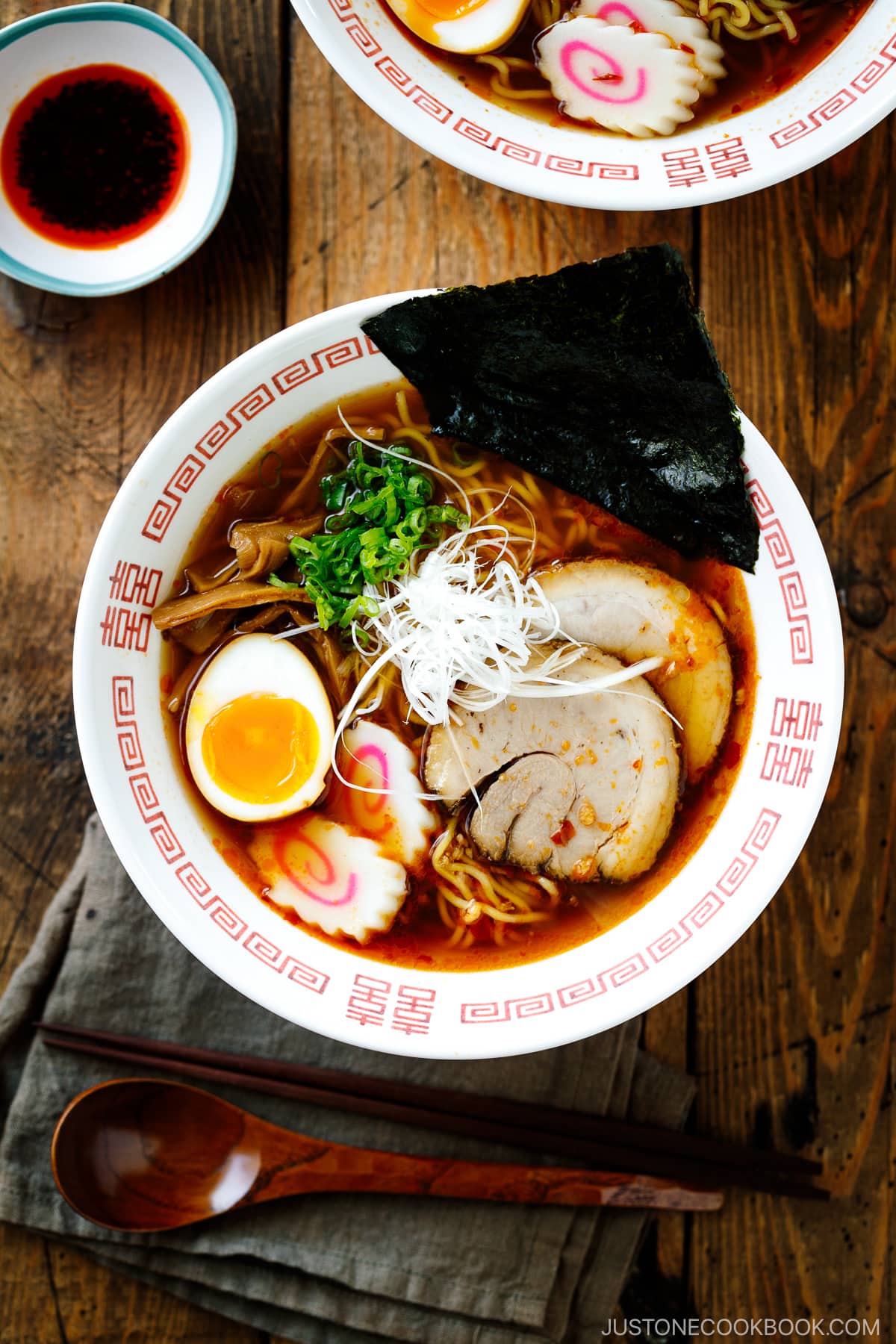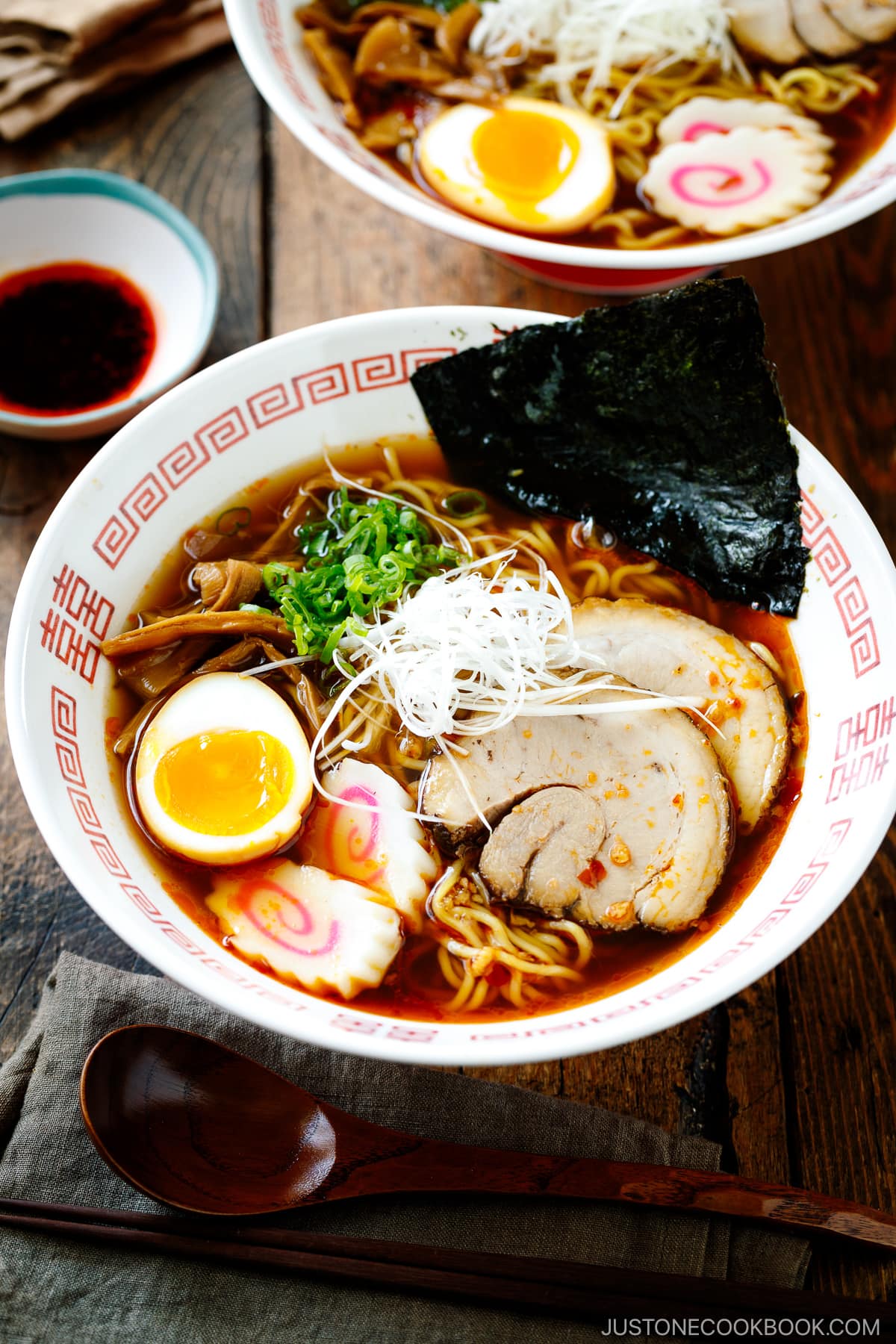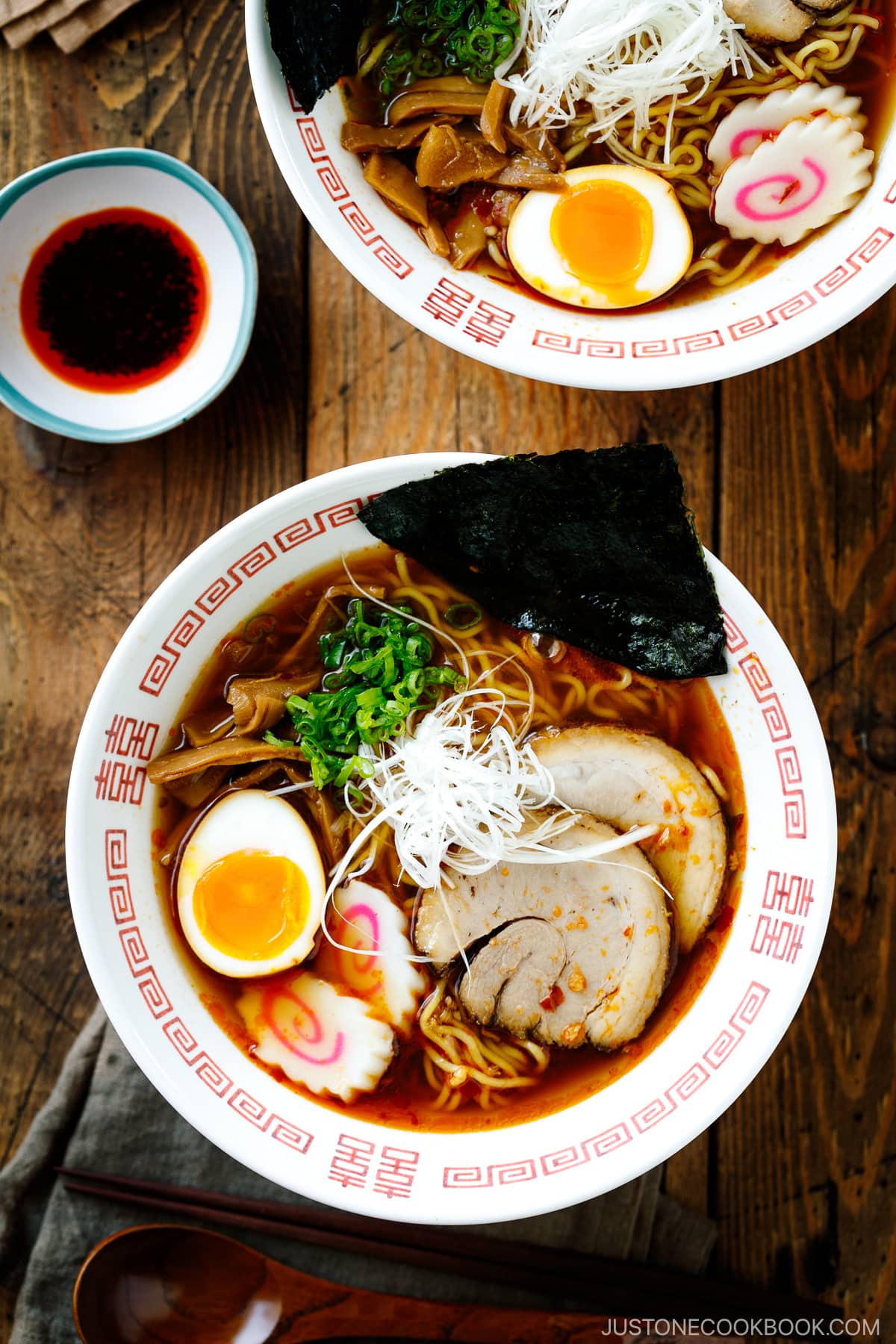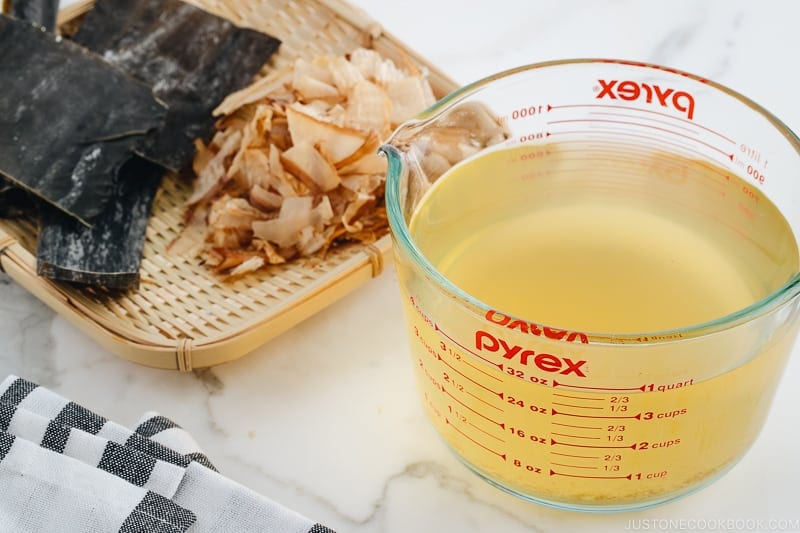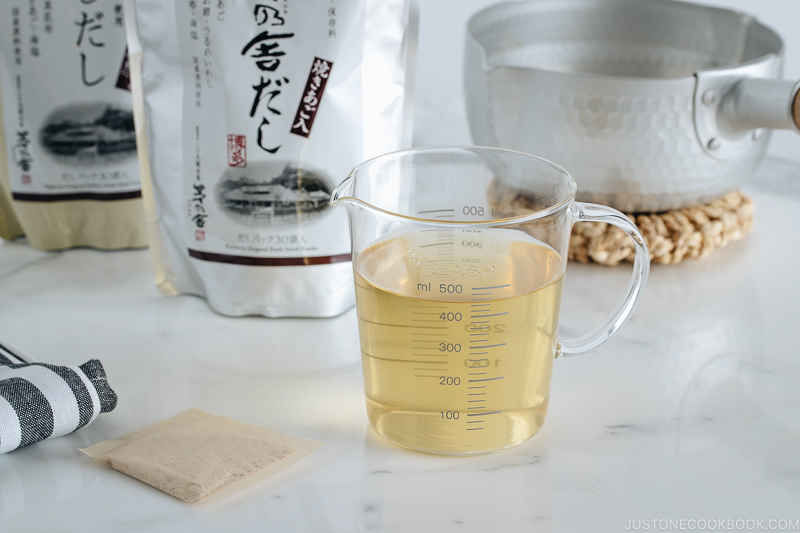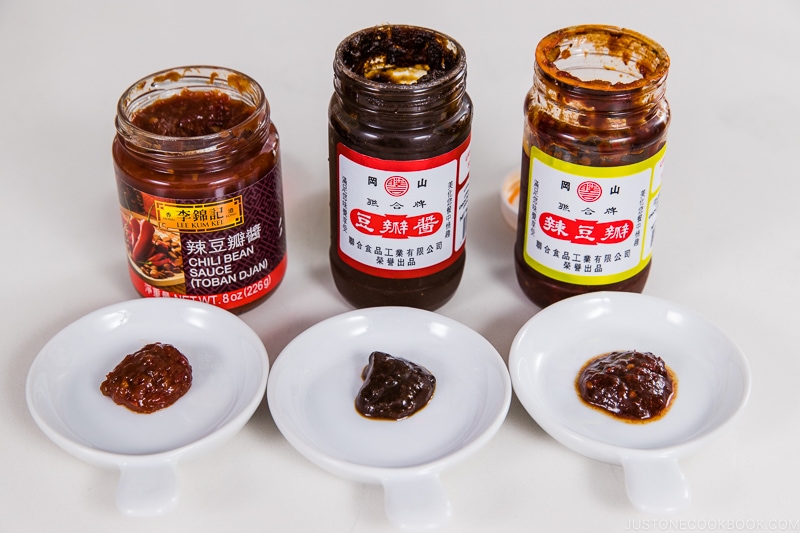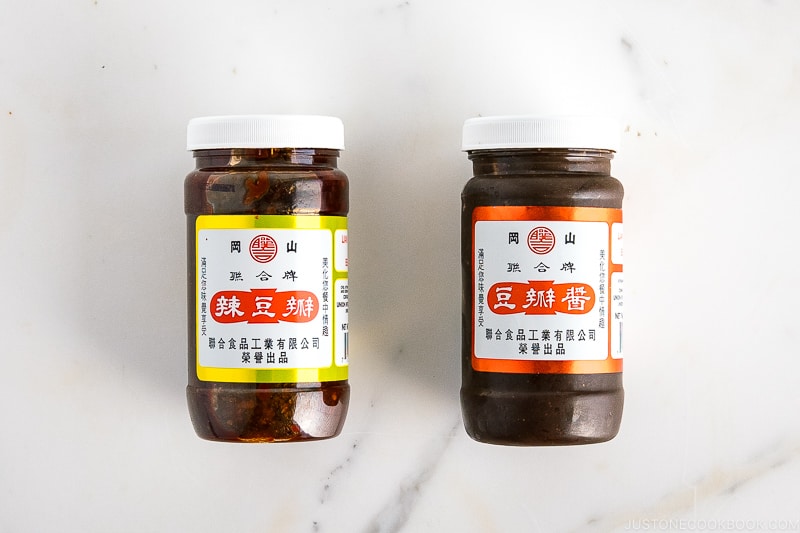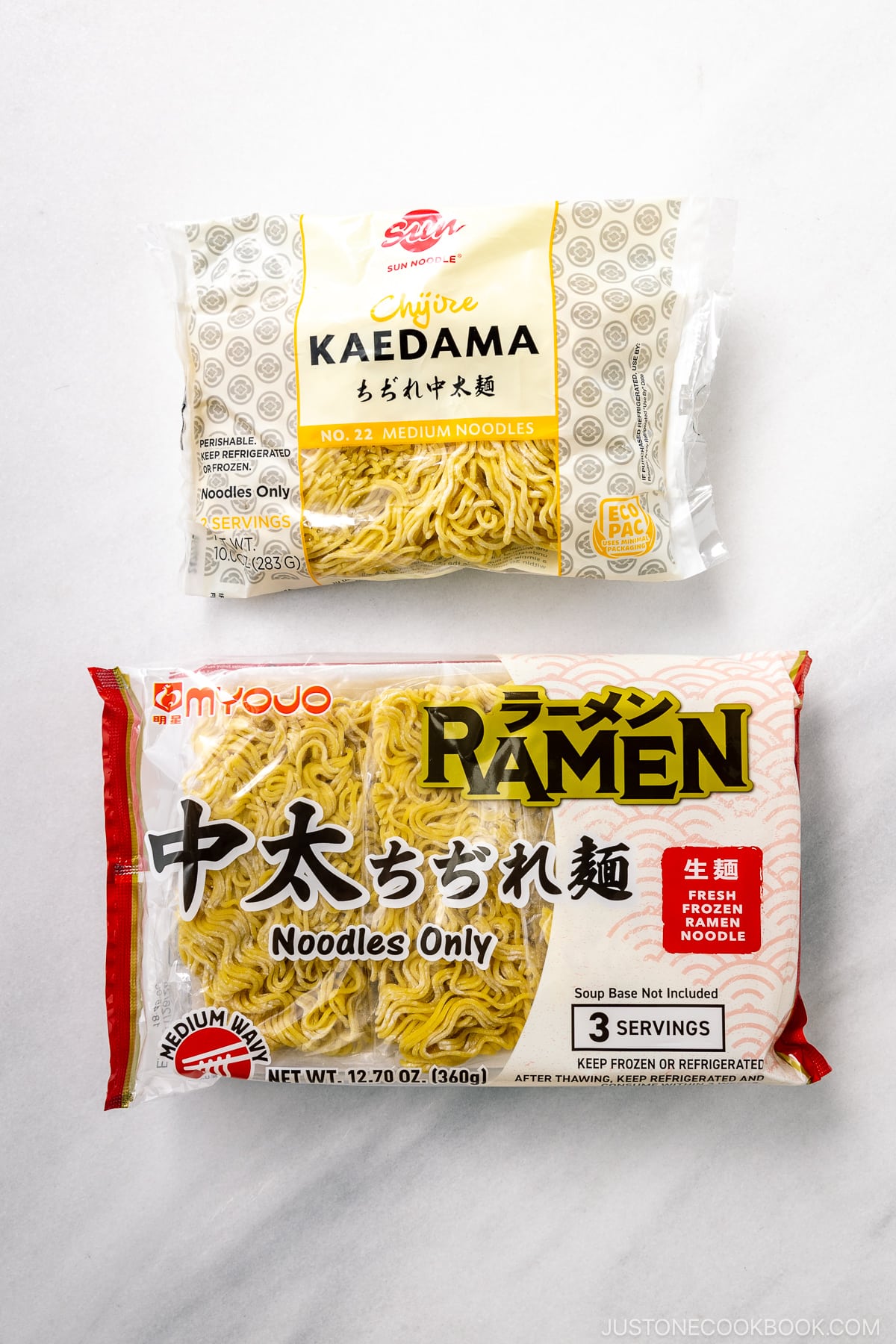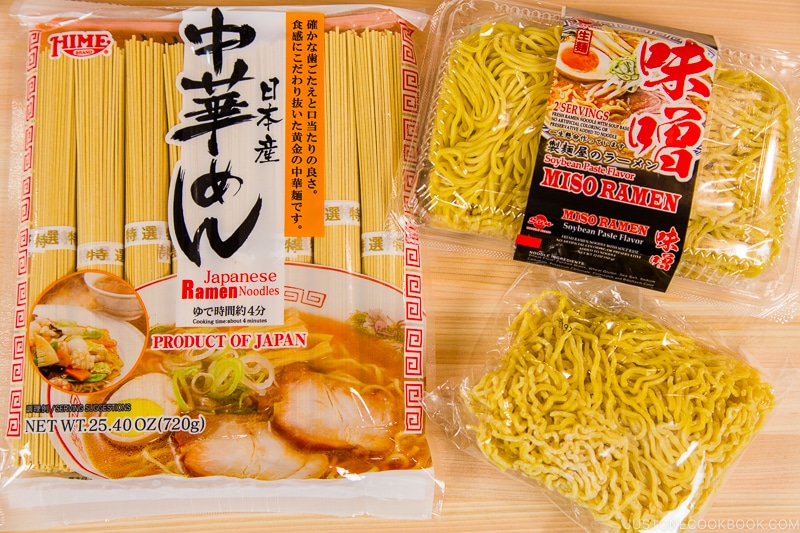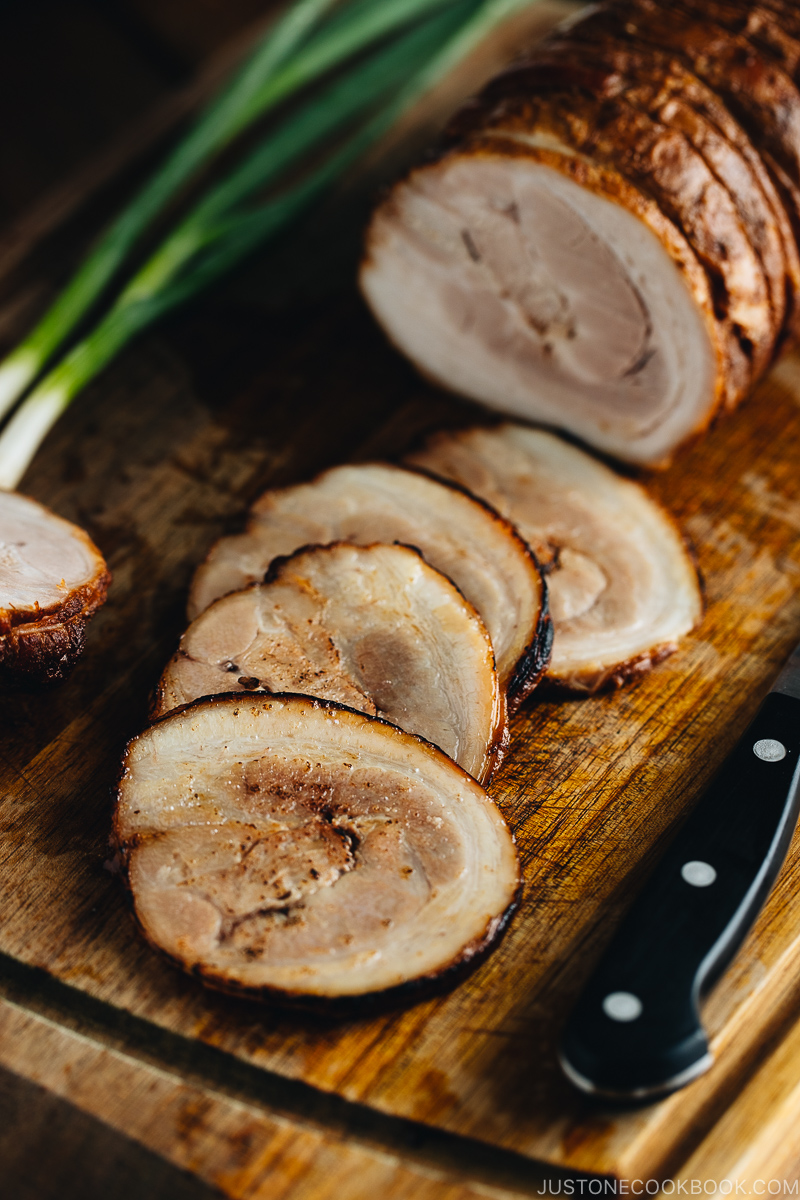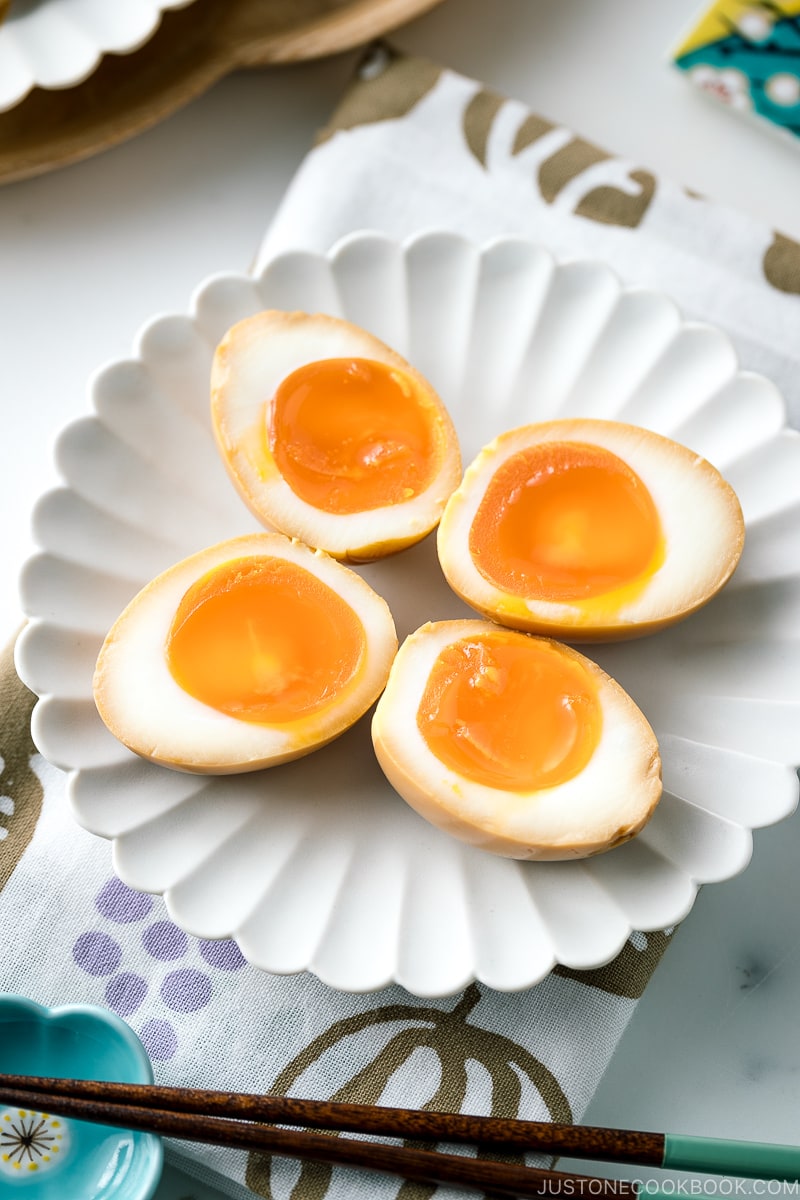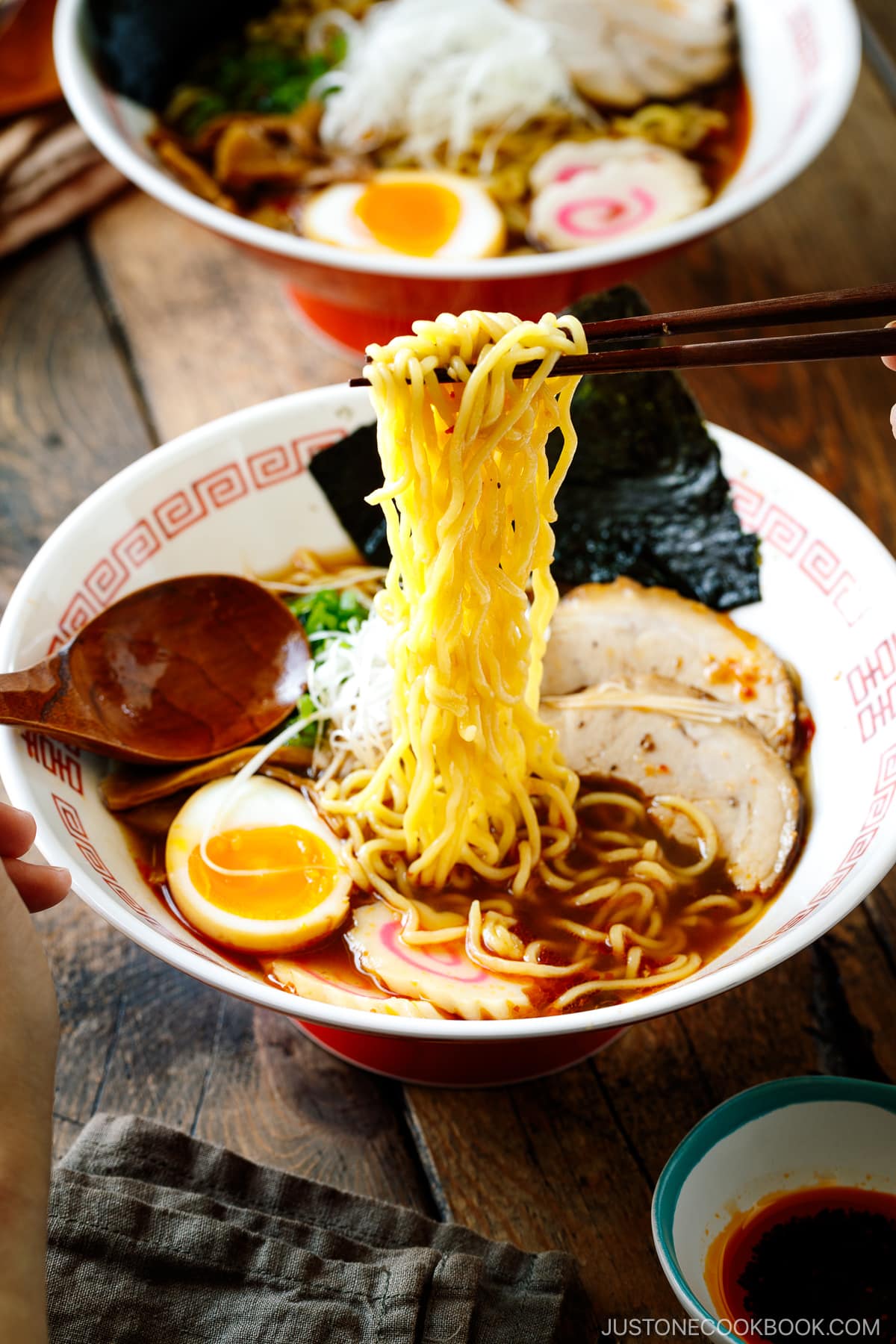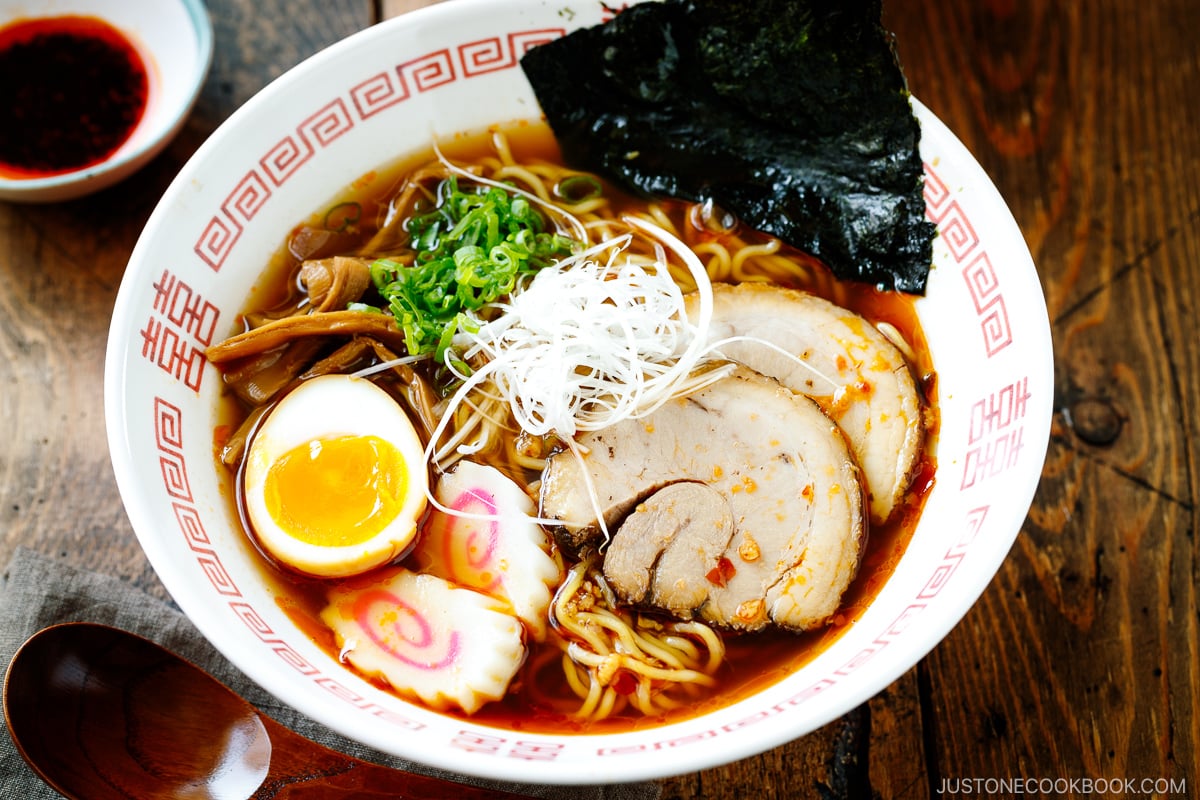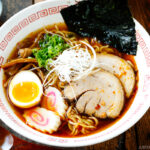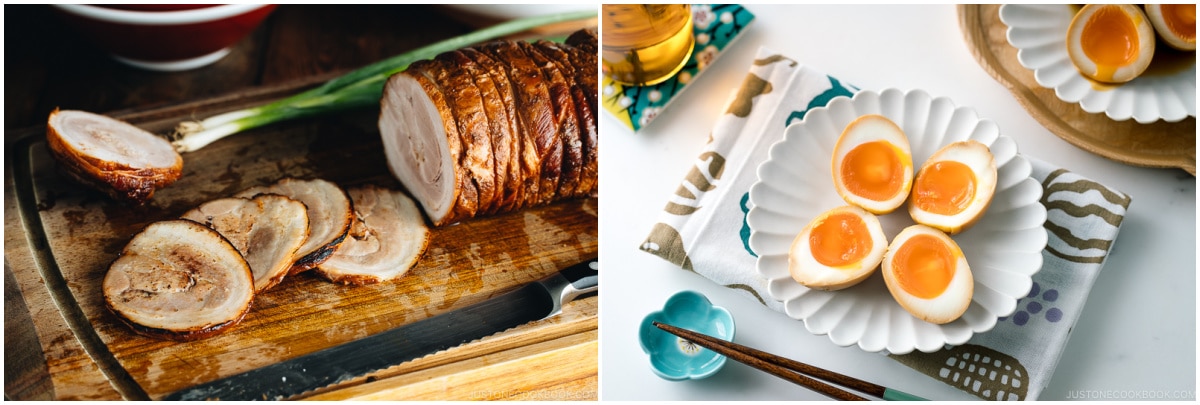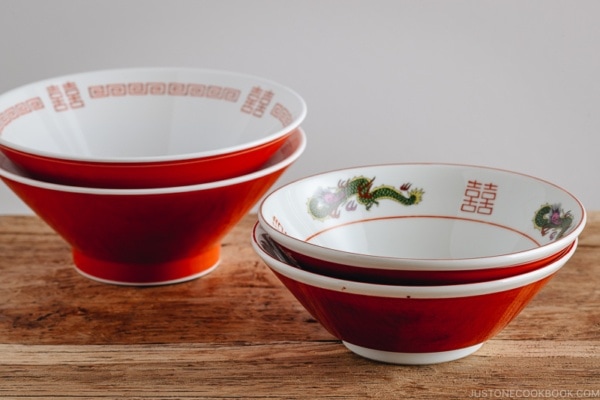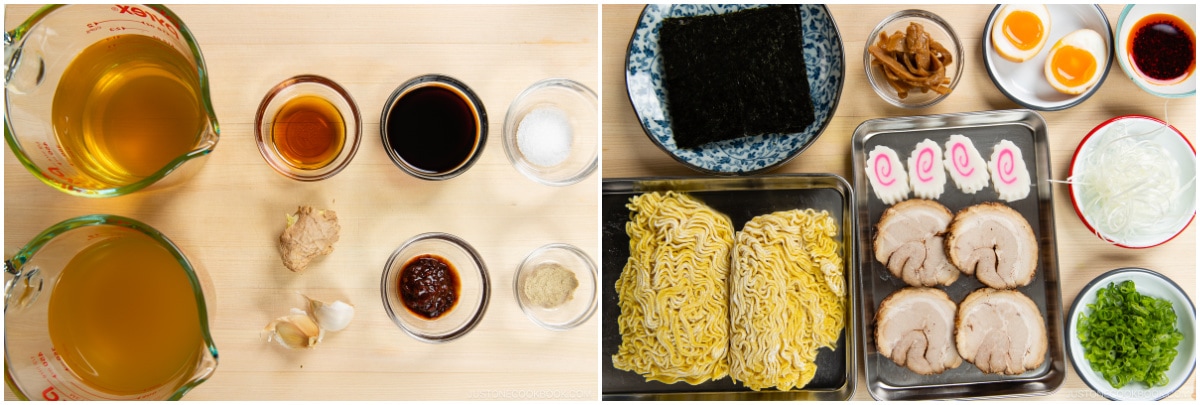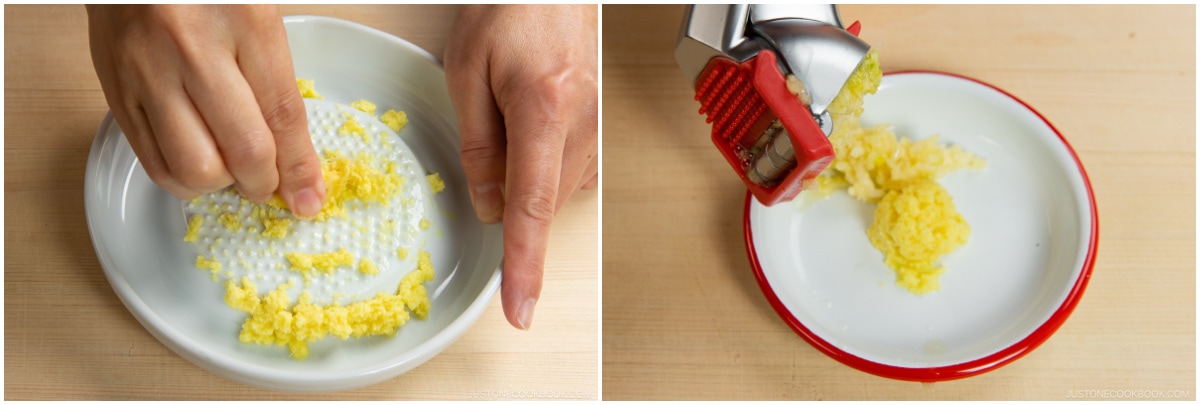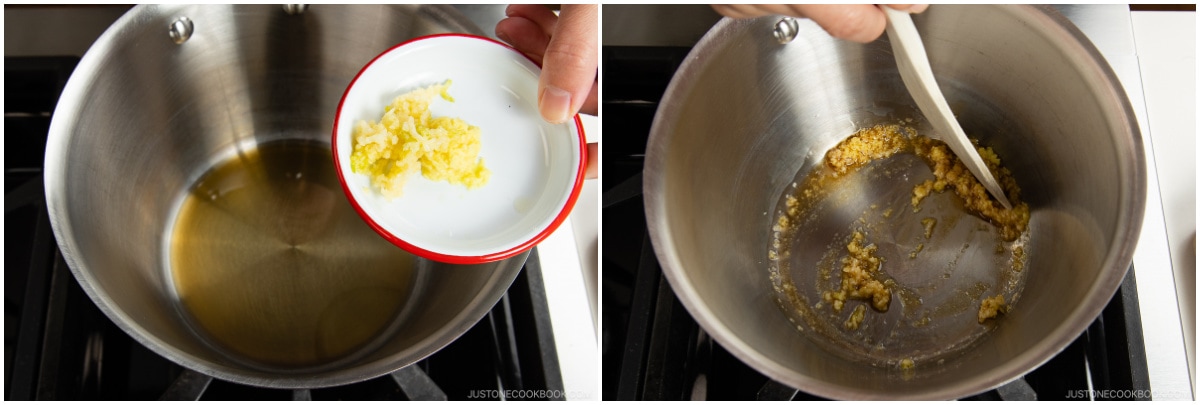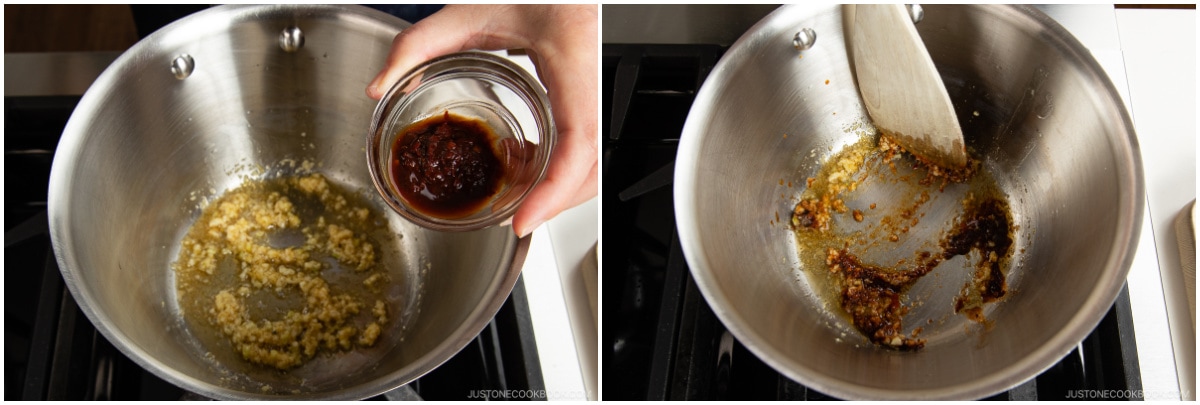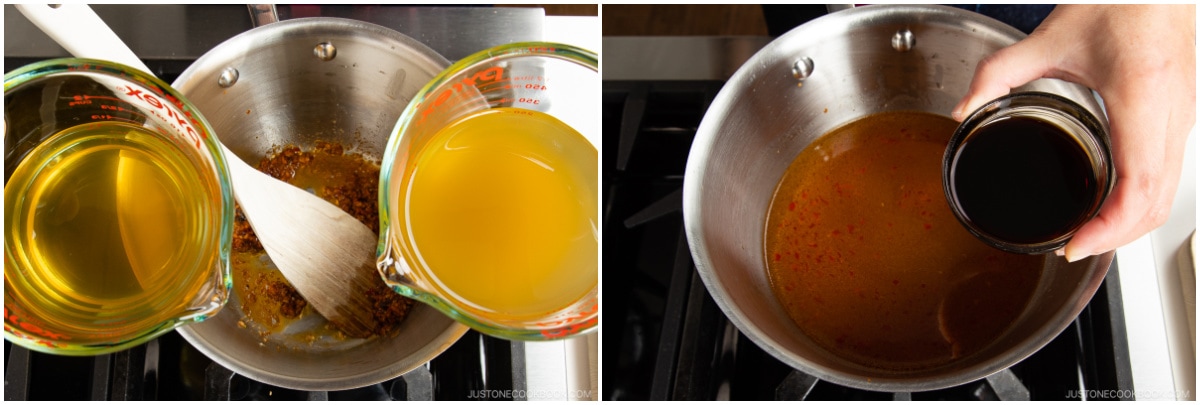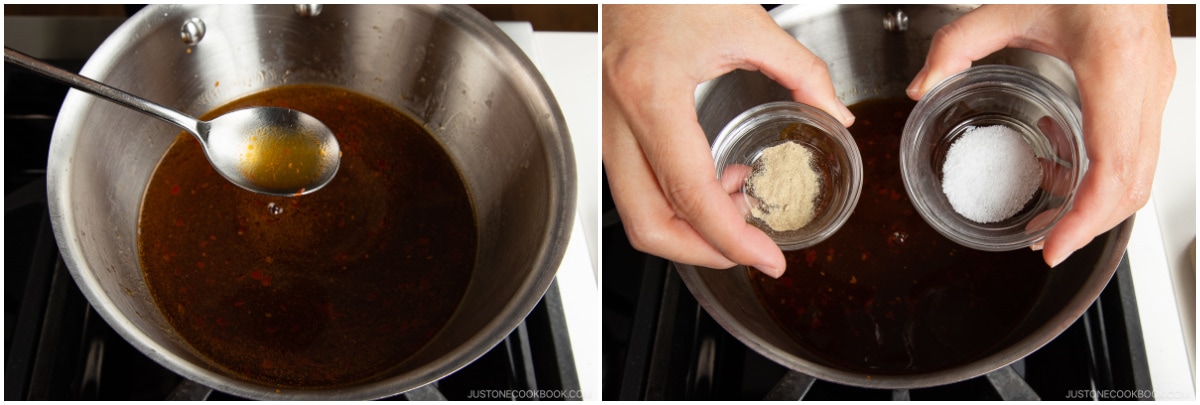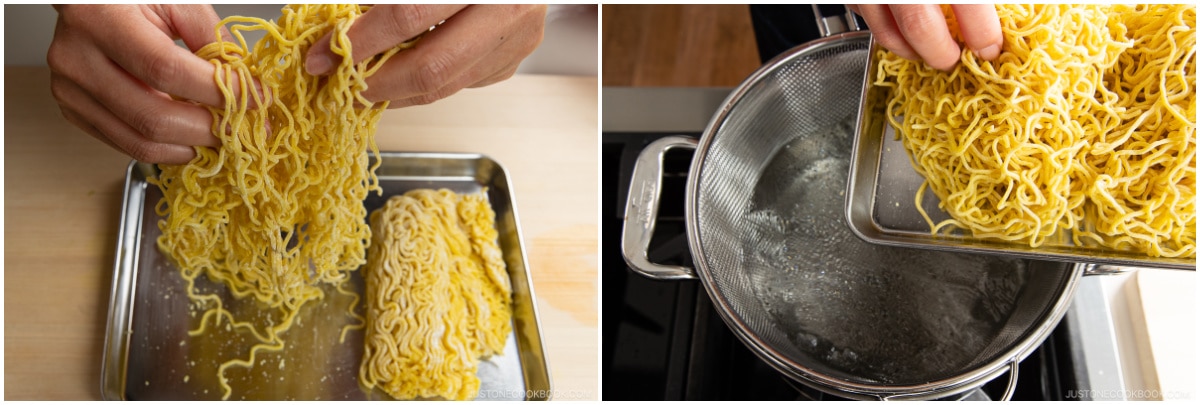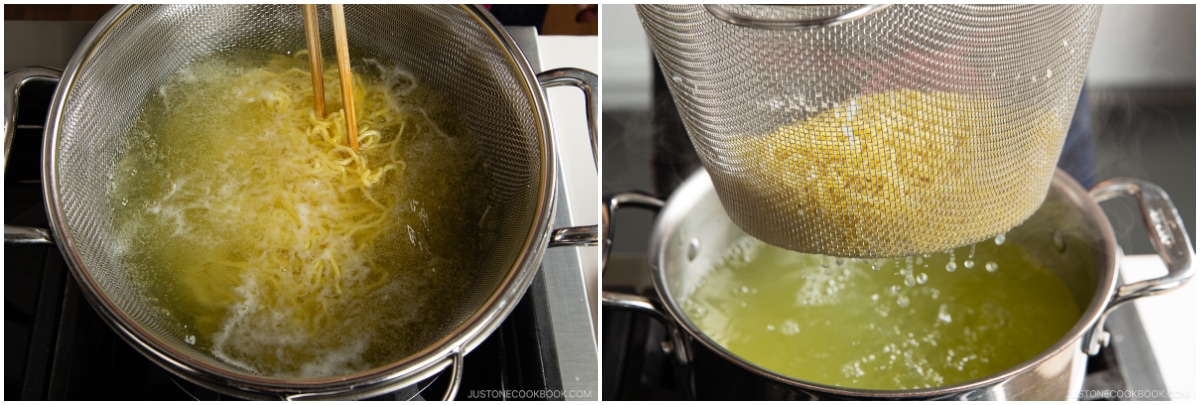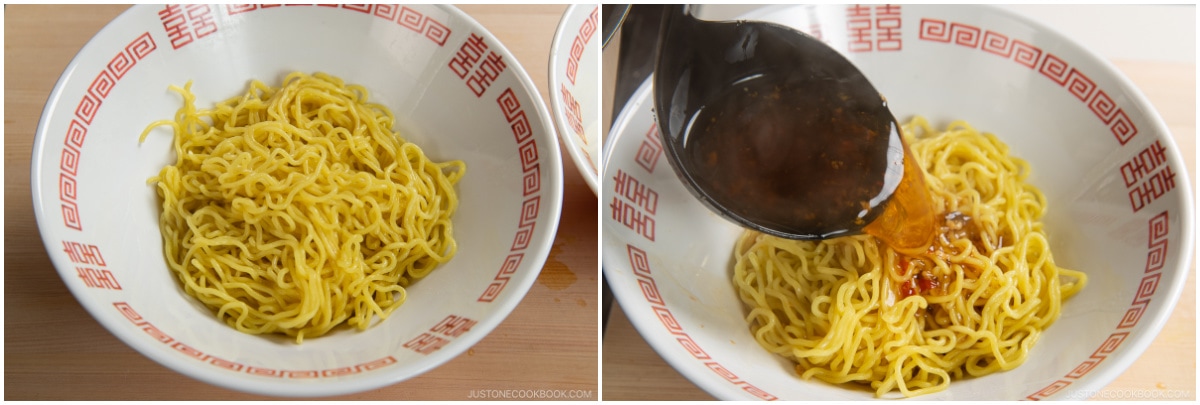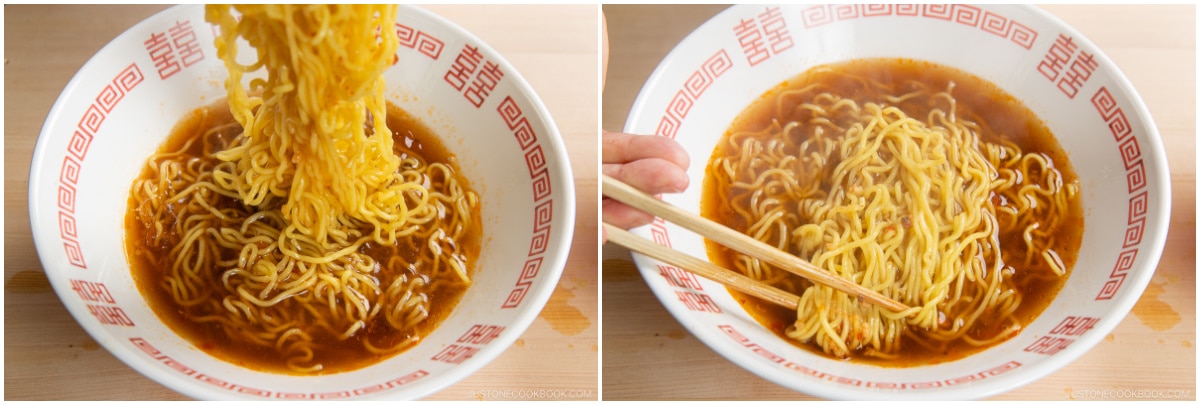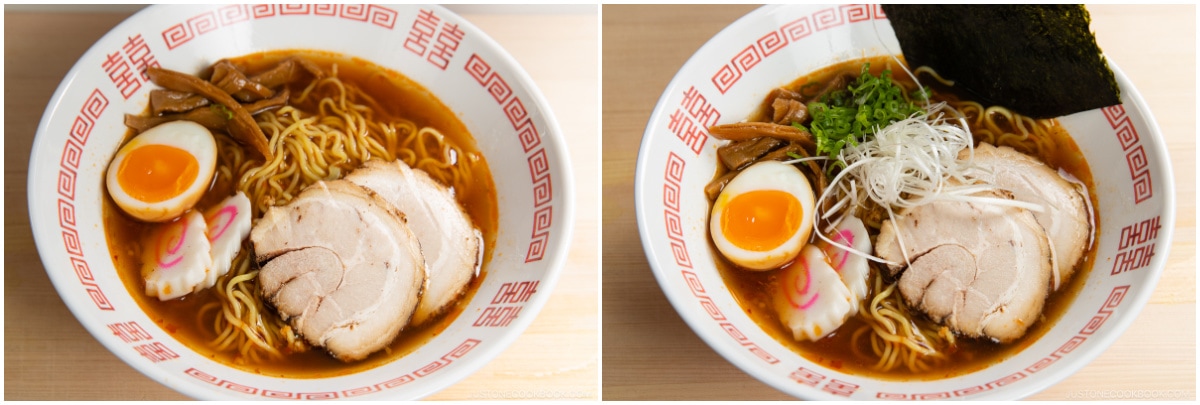Are you ready for some noodles, melt-in-your-mouth chashu pork, pickled bamboo shoots, fresh chopped scallion, and a spicy broth that you can’t stop slurping? I hope you are hungry because we’re going to make some hot bowls of Spicy Shoyu Ramen (ピリ辛醤油ラーメン) together. If noodle soup is your comfort food, you are going to enjoy this one.
What is Shoyu Ramen?
Shoyu (醤油) means soy sauce in Japanese. Shoyu ramen simply refers to ramen served with a soy sauce-based broth that is usually in clear, brown color. It is one of the three main types of ramen categorized by broth flavors. If you’re in Tokyo, shoyu ramen is the most familiar form of ramen you’ll find. To make a good bowl of ramen is an art form itself. Ramen chefs pull together different elements to define the bowl of noodles. Even the simplest of ramen requires close attention to the ingredients, be it the broth or noodles, making sure each one interacts harmoniously. But, please don’t let this stop you from making ramen at home. As long as you have a well-stocked Japanese/Asian pantry, it is possible to whip up a decent ramen at home. The beauty of homemade ramen is you get to control what’s in the soup!
How to Make Spicy Shoyu Ramen at Home
Ingredients You’ll Need
Ginger Garlic Doubanjiang (spicy chili bean paste) – We’ll cover this topic below. Chicken stock Dashi (Japanese soup stock) – We’ll cover this topic below. Soy sauce Roasted sesame oil Salt White pepper powder Fresh or dried ramen noodles – We’ll cover this topic below. Ramen toppings – We’ll cover this topic below.
Overview: Cooking Steps
The workflow of assembling the ramen is very simple. Soggy noodles in ramen are a no-no. When the ramen is ready, serve immediately and slurp!
Two Key Ingredients to Make Delicious Soup Broth
We all know that soup broth defines ramen. It is what brings the dish together. But many of us do not have the time to simmer the soup stock with bones and all for hours. How do we make delicious soup broth without compromising the flavor of homemade ramen broth? Here are two ingredients I used to boost the flavor of the soup broth.
1. Dashi (Japanese Soup Stock)
Besides the chicken stock, I also used dashi (Japanese soup broth) to give the soup broth extra depth. For this recipe, I actually used my favorite Dashi Packet to make dashi. Since I wanted a strong dashi flavor, I used two packets instead of recommended one packet for the measured water.
2. Doubanjiang (Spicy Chili Bean Paste)
The second key ingredient is doubanjiang (豆瓣醤) or spicy chili bean paste. It’s a combination of fermented broad beans as the main ingredient, soybeans, and often hot chilies. The salty, savory, umami-rich paste adds an incredible depth and character to the broth that you should not substitute. You can add more if you like your soup to be spicy, but a small amount would be enough to give it a good kick. Non-Spicy doubanjiang: You can find non-spicy versions made in Taiwan, Hong Kong, and Guangdong. It has the same savory depth in the paste but without heat. To distinguish the two versions, the Sichuan doubanjiang is called la-doubanjiang (辣豆瓣醬, “la” (辣) meaning ‘hot’ or ‘spicy’).
Ming Teh Doubanjiang (non-spicy) – Yummy Bazaar Kangshan Doubanjiang (non-spicy) – Walmart Kangshan Doubanjiang (non-spicy) – Weee!
Doubanjiang substitute: If you really can’t find doubanjiang, you can use gochujang (Korean chili paste; spicy) or doenjang (Korean soybean paste; non-spicy). However, the ingredients are slightly different and have different flavor profiles.
Where to Get Fresh Ramen Noodles
Fresh ramen noodles are made from four ingredients: wheat flour, water, salt, and kansui. Despite the yellowish color, the noodles do not contain eggs. Kansui, an alkaline solution, is what gives ramen its yellow tint and springy texture.
Ramen noodles are either straight (ストレート麺) or wavy (ちぢれ麺). Generally, straight noodles are used for tonkotsu ramen while wavy noodles are used for soy sauce ramen, salt ramen, and miso ramen, but of course, there are exceptions. Ramen noodles have 6 different thicknesses: ultra-thin (極細麺), thin (細麺), medium-thin (中細麺), medium-thick (中太麺), thick (太麺), and extra thick (極太麺).
The ramen noodles used in shoyu ramen are usually the springy, wavy type. Big Japanese grocery stores like Mitsuwa, Nijiya, and Marukai (Tokyo Central) sell packages of fresh ramen noodles (with or without soup packages included). Some large Korean and Chinese grocery stores also carry packages of fresh ramen noodles from Myojo and Yamachan Ramen. Sun Noodles make great noodles and they ship domestically! If you are looking for gluten-free noodles, check out my favorite vegan-friendly ramen noodles by Gluten Free Meister (Kobayashi Seimen).
Ramen Toppings
There are various toppings that can go into spicy shoyu ramen. In this recipe, I top the ramen with:
Chashu Ramen Egg (ajitsuke tamago or ajitama) or soft-boiled egg Menma (seasoned bamboo shoots) Narutomaki (fish cake) Shiraga negi (Japanese long green onion garnish) Chopped scallions Nori Homemade La-Yu (Japanese Chili Oil) – Swirl in a little bit if you like an extra kick of spice
It may read like a long list of toppings, but you can definitely decide what you’d like to add to your ramen. Seasoned shiitake mushrooms or tofu are a great stand-in for chashu if you’re vegetarian. Feel free to keep it as simple or complex as you like!
Try Other Delicious Ramen Recipes
Vegetarian Ramen Shio Ramen Miso Ramen Tan Tan Ramen (Tantanmen) Tan-Men Mazesoba (Mazemen) Tsukemen (Ramen with Dipping Sauce)
Also, check out the Japanese Ramen Guide for Beginners! Wish to learn more about Japanese cooking? Sign up for our free newsletter to receive cooking tips & recipe updates! And stay in touch with me on Facebook, Pinterest, YouTube, and Instagram. Editor’s Note: The post was originally published on Nov 28, 2011. It’s been updated with new images and updated content on May 15, 2023.
